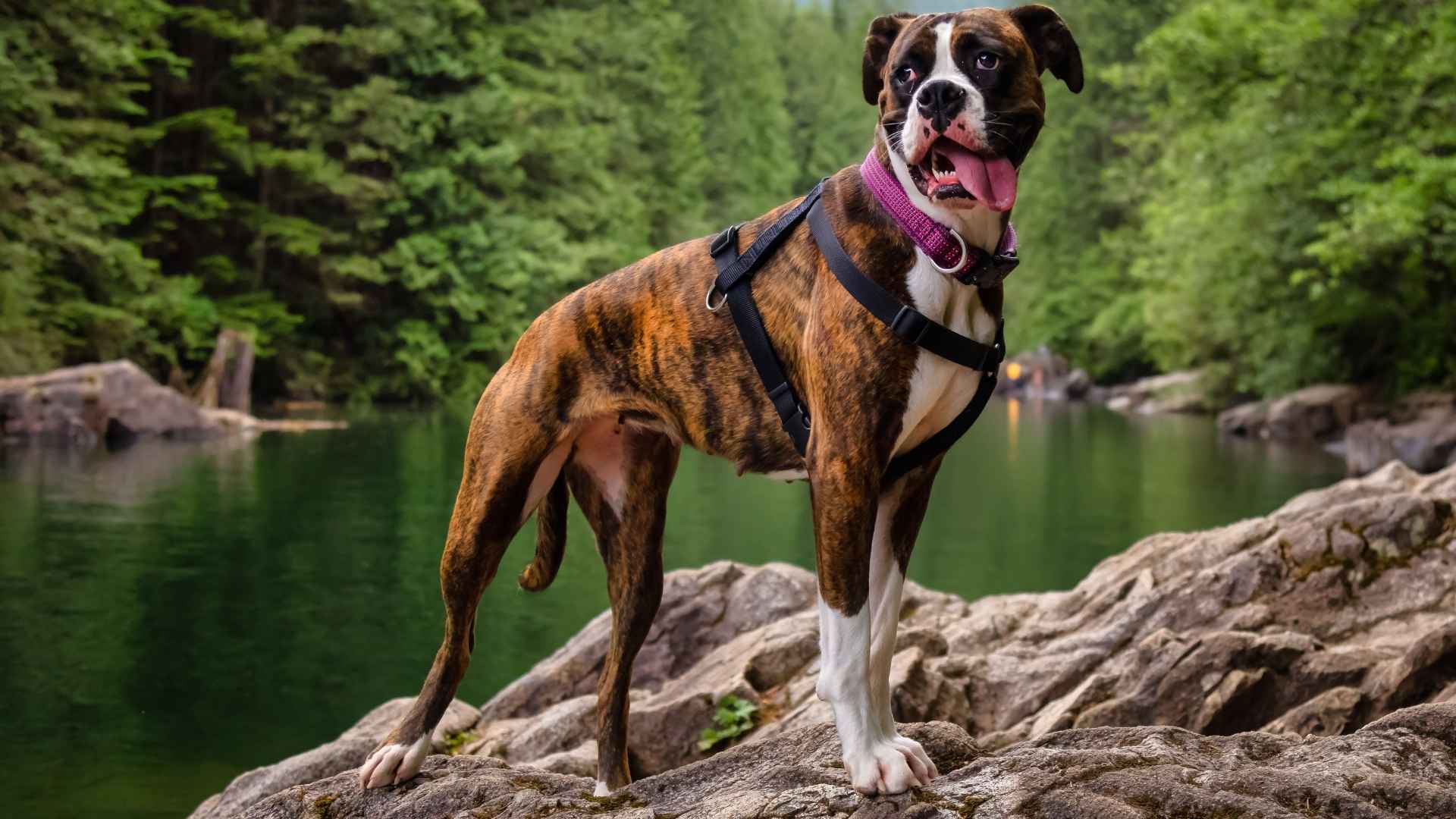Muscular medium dog breeds strike a balance between power and agility, making them athletic and suitable for family life. The breeds were developed for tasks such as herding and guarding. Their dense muscles and structured bodies enable them to perform physical tasks while forming strong intellectual connections with their owners.
The solid bodies require owners to understand and manage specific care duties. According to PetMD’s overview, medium-sized dogs that weigh more often develop “hip dysplasia and elbow dysplasia” conditions. The need for proper exercise and nutrition, along with early-life care, emerges as essential for supporting their development.
We will explore the appealing characteristics of muscular dog breeds, including their history and physical attributes, and discuss how to effectively nurture their strength and spirit.
Muscular Medium Dog Breeds
Here are the 10 most muscular and medium-sized dog breeds:
1. American Staffordshire Terrier
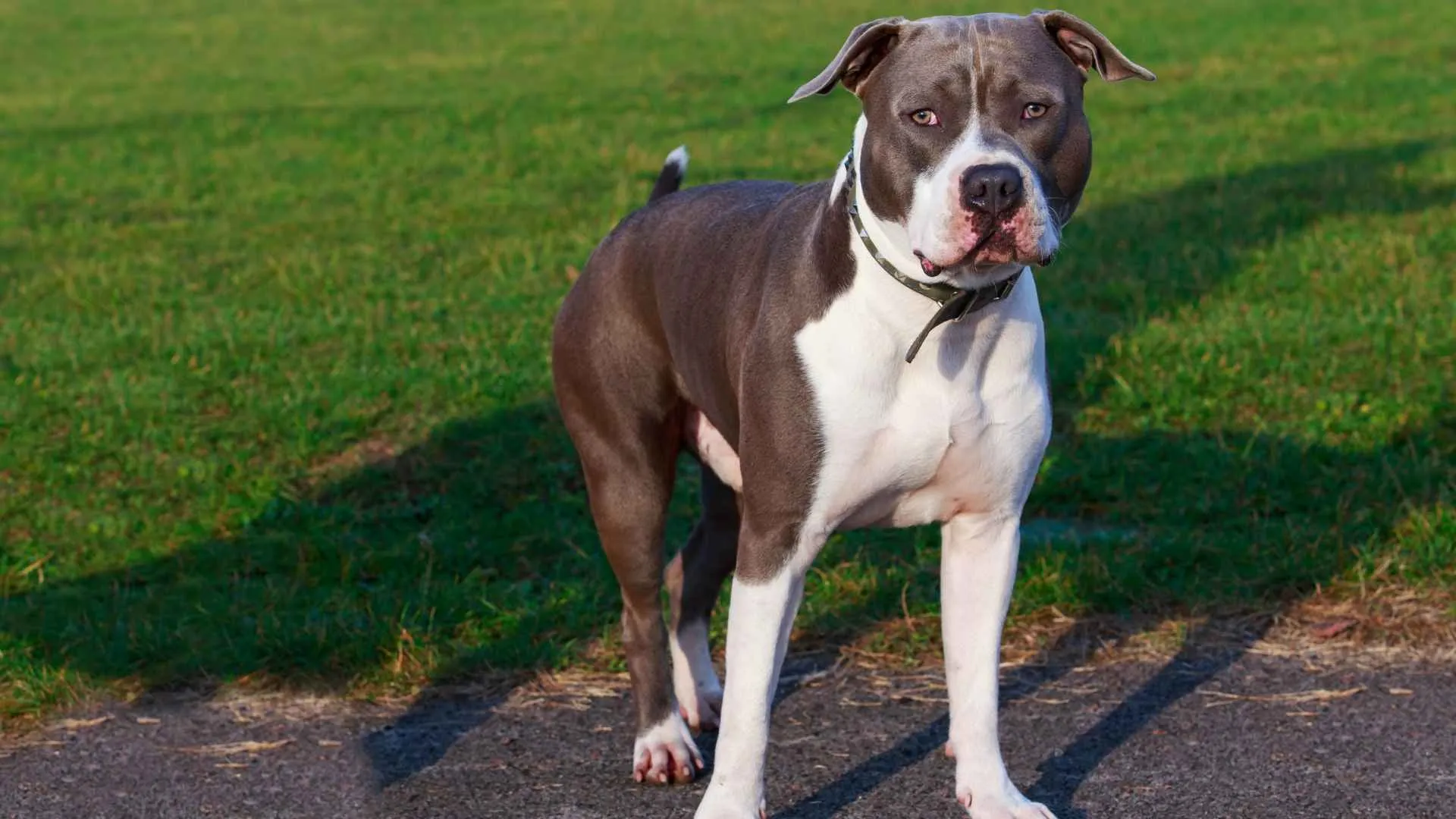
The American Staffordshire terrier exceeds the status of just a muscular powerhouse. These dogs showcase their athletic appearance while their adorable personalities and irresistible smiles capture hearts. Although their historic roots lie in 18th- and 19th-century bull-baiting practices, these dogs demonstrate an entirely different nature today.
They have a strong appetite that makes it necessary to monitor their food portions to keep their muscular bodies from gaining weight. The tough but huggable breed stays adventure-ready through a diet balanced with lean portions. These dogs provided essential service to farms by hunting and protecting livestock.
2. Boxer
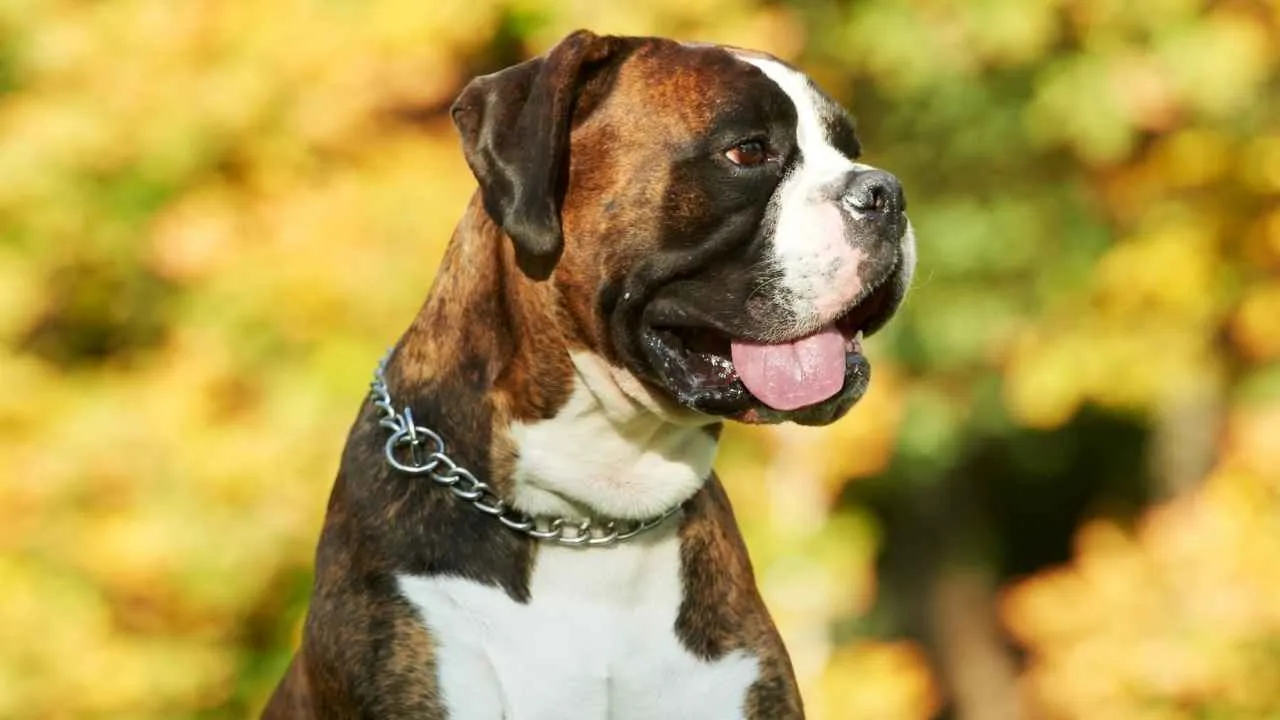
Boxers demonstrate both physical power and graceful beauty. A sleek coat hides their strong muscles, which contribute to making Boxers one of the most dynamic and attractive dog breeds. Boxers have earned the title of “clown of the canine world” because they display goofy personalities. Boxers maintain their youthful spirit and provide unlimited energy to their households.
Originally bred in the 19th century in Germany from the Bullenbeisser, the boxer breed became known as a hunting dog. They show their deep emotions through their soulful, dark eyes, along with wrinkled foreheads and broad muzzles. The facial expressions of Boxers display their emotions, showing signs of curiosity and joy, while also exhibiting playful mischief.
3. Australian Cattle Dog
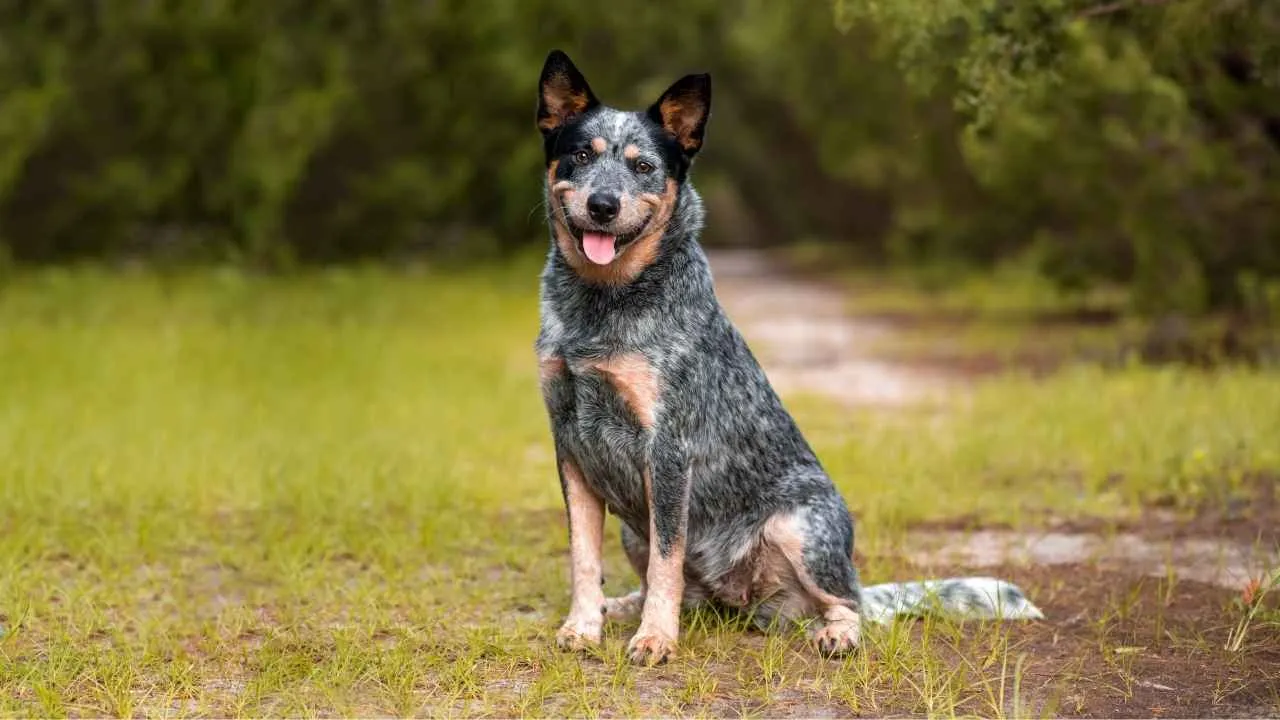
Australian cattle dogs possess a muscular, stocky physique characteristic of their medium-sized herding breed, making them powerful working animals. Their power, combined with stamina and endurance, makes them ideal working dogs for farms and ranches. The distinctive all-white coat is characteristic of Australian cattle dog puppies from birth.
As they mature, they develop their signature blue or red mottling, which results in distinctive and striking patterns. They demonstrate remarkable intelligence by solving complex problems with ease. According to Purina, work-oriented tasks bring out their best performance capabilities, which enables them to anticipate the future needs of their owners by ten steps.
4. Belgian Malinois
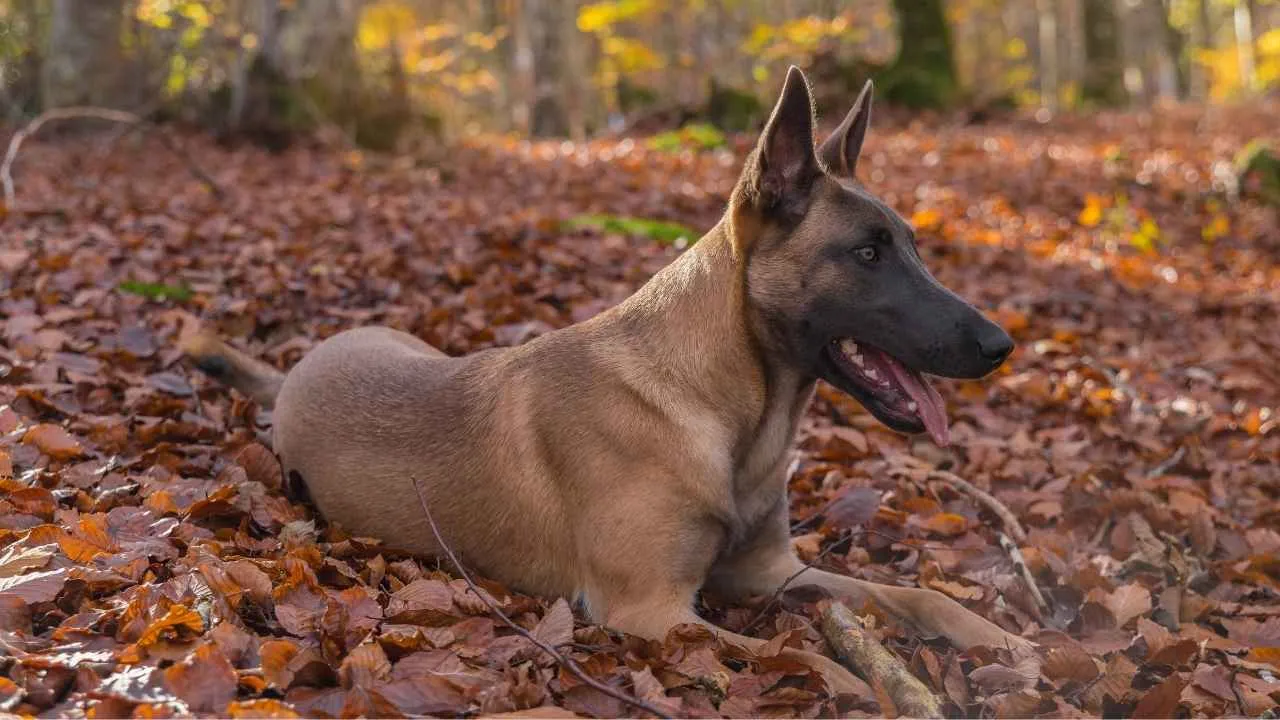
Belgian Malinois is a muscular breed that allows for agile movement and sustained endurance. In the dog world, they perform like Olympic athletes. According to WebMD, they have dense, weatherproof coats that allow them to face any weather. Their short insulating coats enable the dogs to endure both hot and cold conditions.
A Belgian will remain unsatisfied after a brief walk around the neighborhood. Physical and mental challenges are essential components of these dogs’ daily lives. During the late 19th century in Malines, they earned recognition for their role as sheep herders. These dogs embody loyalty and discipline as they perform service tasks around the world today.
5. Vizsla
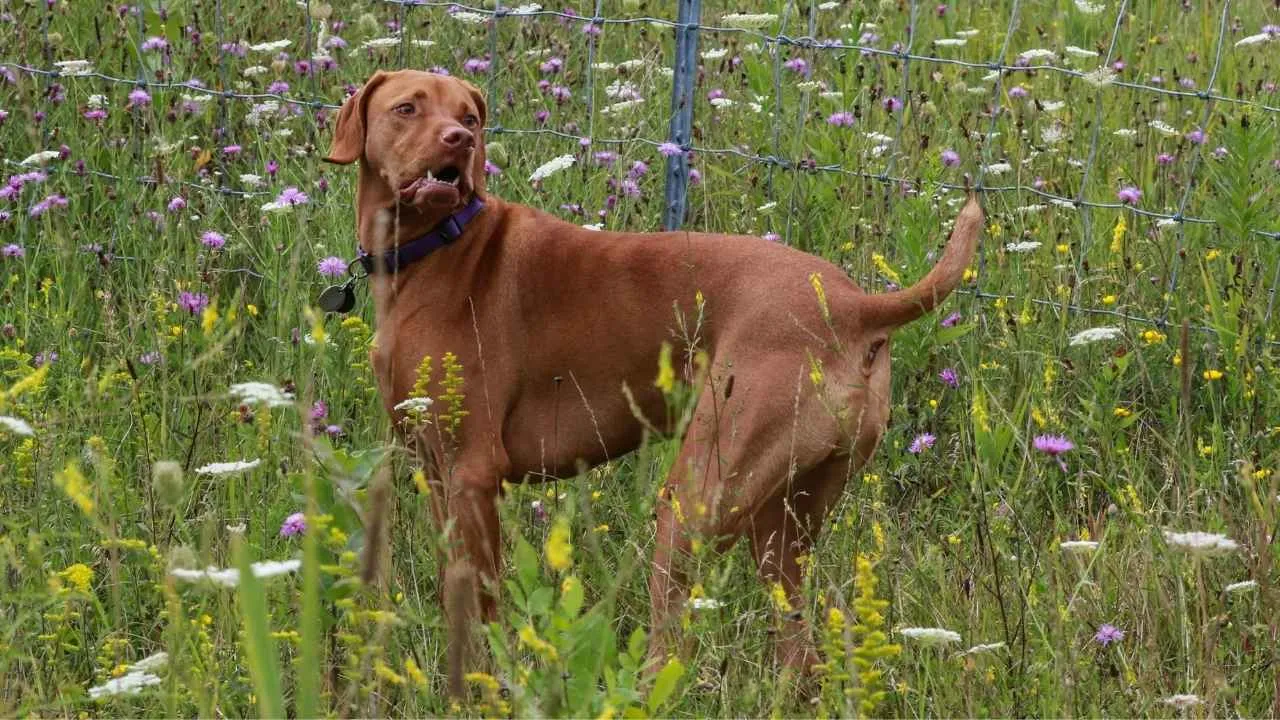
Vizslas are athletic dogs, excelling through their sleek, muscular bodies and balanced structure. The way they run and leap shows their ancestral hunting background. They have earned the nickname “Velcro dogs” because they remain closely attached to their owners and are known for their affectionate nature.
As fearless hunters, they display sensitivity towards loud noises such as thunderstorms. Although Vizslas are sensitive, they can be calmed in a secure environment with comforting surroundings. Through proper socialization, they can be friendly dogs with humans and other animals, including dogs and cats.
6. Rhodesian Ridgeback
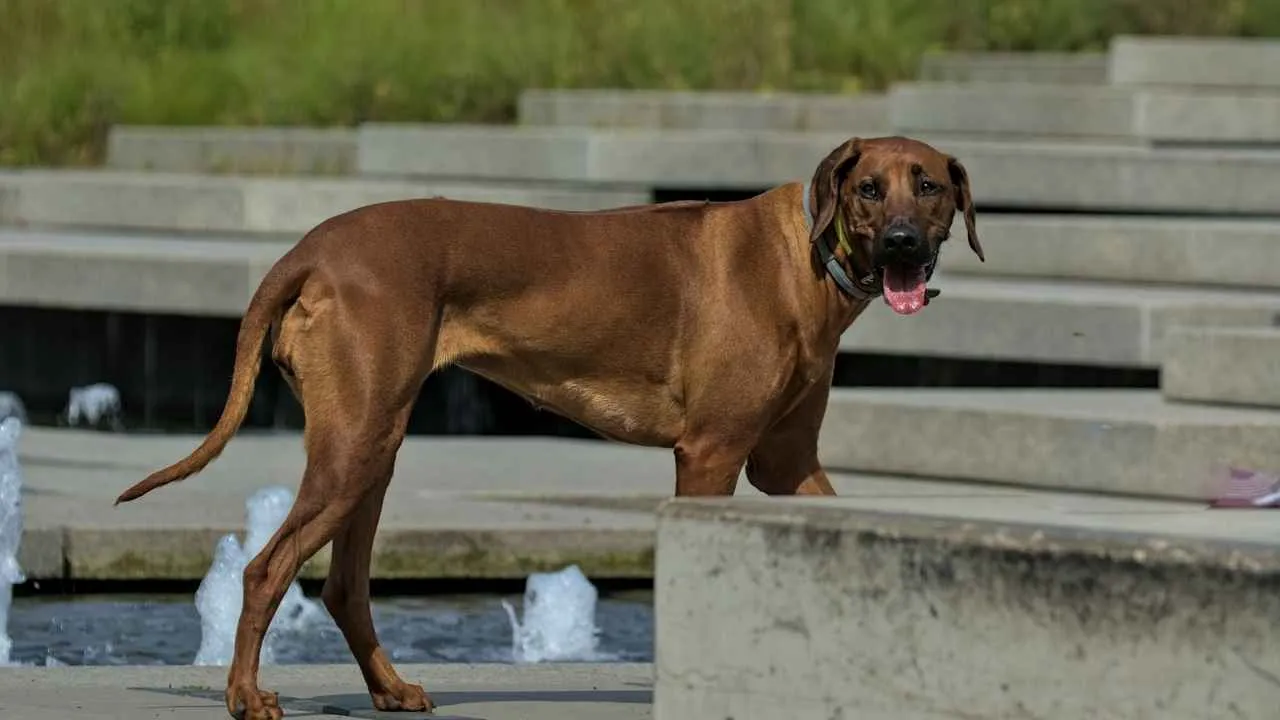
Rhodesian Ridgebacks became known as African Lion Hounds because they show remarkable bravery while tracking and cornering lions without attacking them. They are hunting legends with roots dating back centuries. An uncommon ridge of hair on their backs runs counter to their standard coat direction, making these dogs distinctive.
They exhibit physical strength and stability through their lean, muscular frames. Male Ridgebacks typically weigh between 90 pounds, while their agility enables them to perform as outstanding runners and athletes. They usually remain silent unless something prompts them to bark.
7. Shar Pei
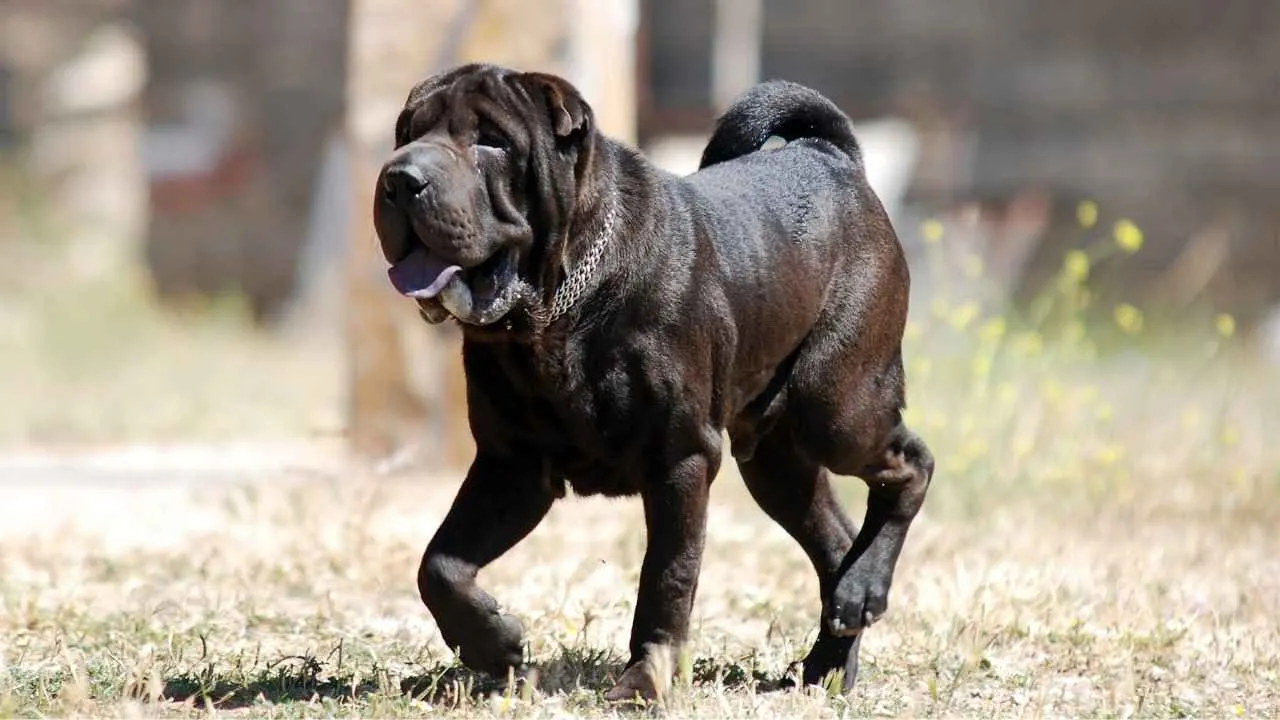
The Shar Pei bears distinctive deep skin folds and a solemn look, but its true strength lies in its muscular build and compact medium-sized frame. The loose skin and broad head were not just decorative features, but also served as protective traits, enabling them to fulfill their roles as guard dogs and hunters in China by preventing enemies from maintaining a solid grip during fights.
They display a serious demeanor but reveal their hidden loyalty and affection when they receive proper training. Due to their short, smooth coat, which is sometimes referred to as a “horse coat”. They require minimal grooming, yet remain a distinguished, low-maintenance pet.
8. Border Collie
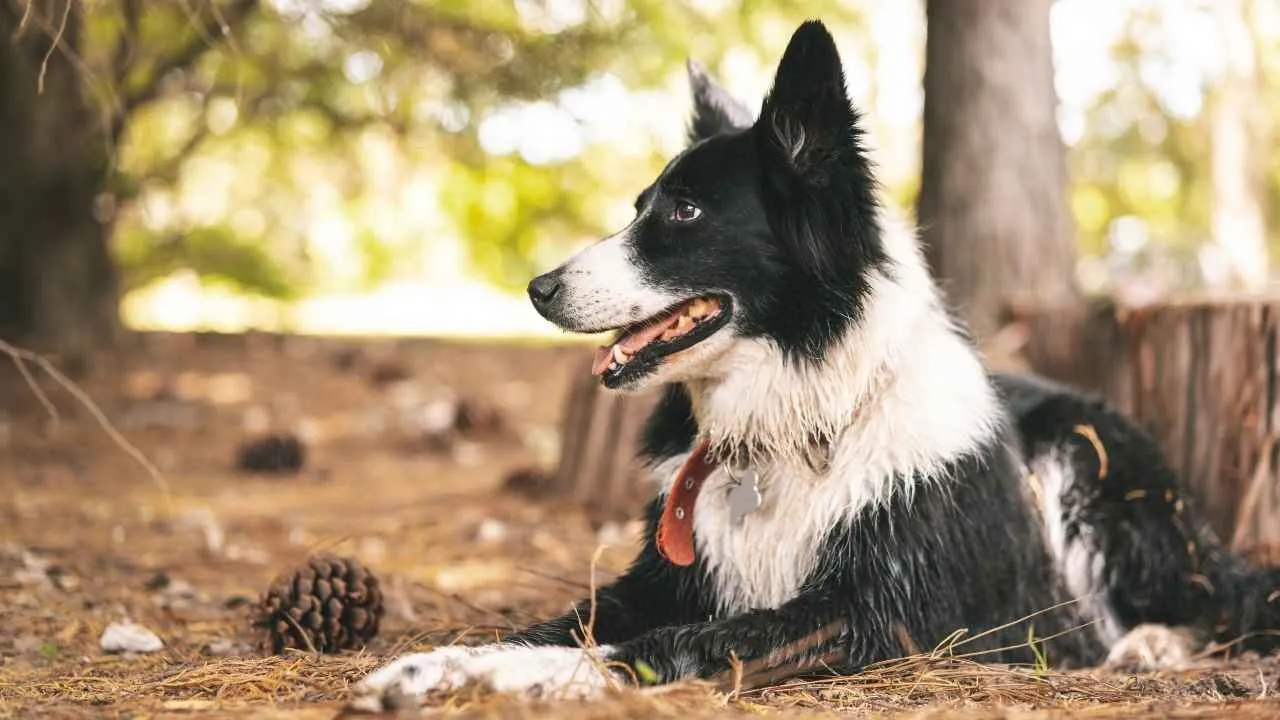
Despite its slim appearance, the border collie holds the title of the most powerful medium-sized dog breed. The Border Collie’s muscular frame, combined with its agility, makes it inherently athletic, while its endless stamina places it among the high-energy dogs globally.
Border Collies rank among the most intelligent dog breeds because they can learn several hundred words and complex tasks when properly trained and receive sufficient mental stimulation. Their availability in smooth and rough coats makes them popular in dog sports as well as obedience trials and movie productions.
9. Dutch Shepherd
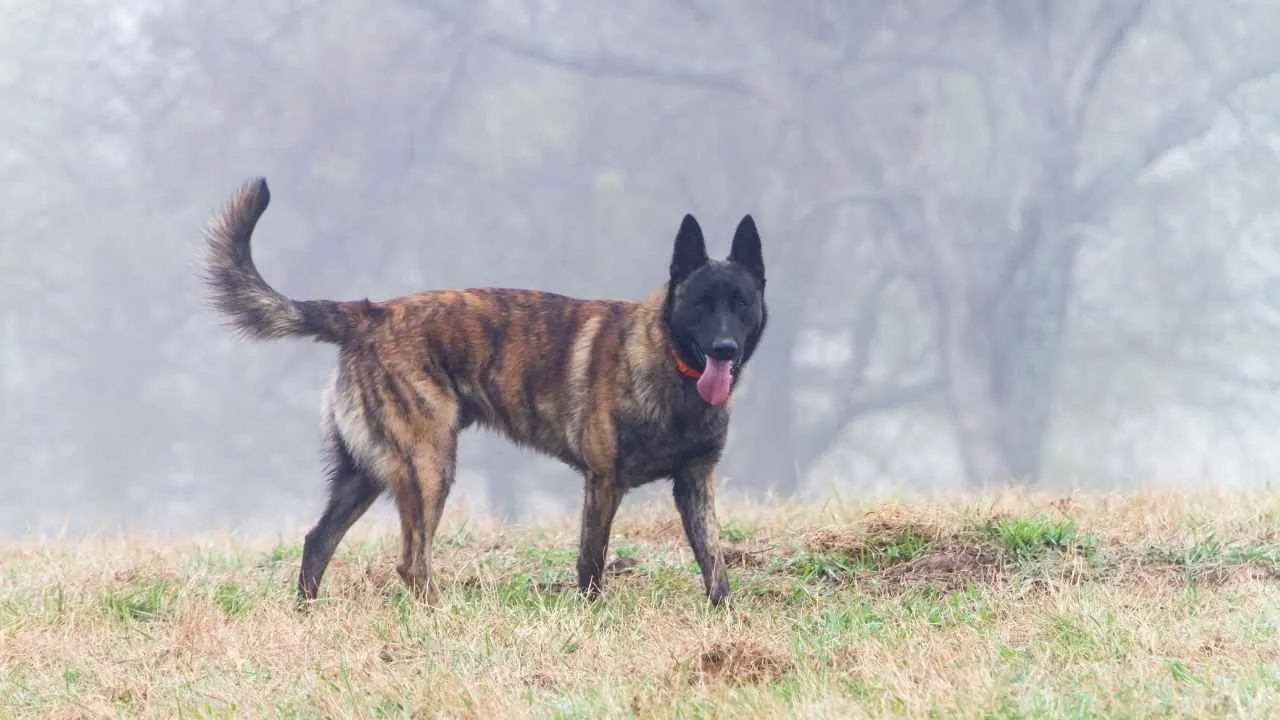
In their Dutch origins, Dutch Shepherds served multiple purposes on farms, including sheep herding, livestock protection, and cart pulling. Their combination of strong muscles and natural intelligence made these dogs indispensable partners in rural settings. As a herding breed, this medium-sized dog stands out for its practical abilities and attractive looks.
They have a unique brindle coat that appears in rough, short, and long variations, requiring consistent grooming tailored to each coat type. The thick double coat of these dogs serves as protection across various climates, which benefits working dogs that spend time outdoors.
10. Bull Terrier
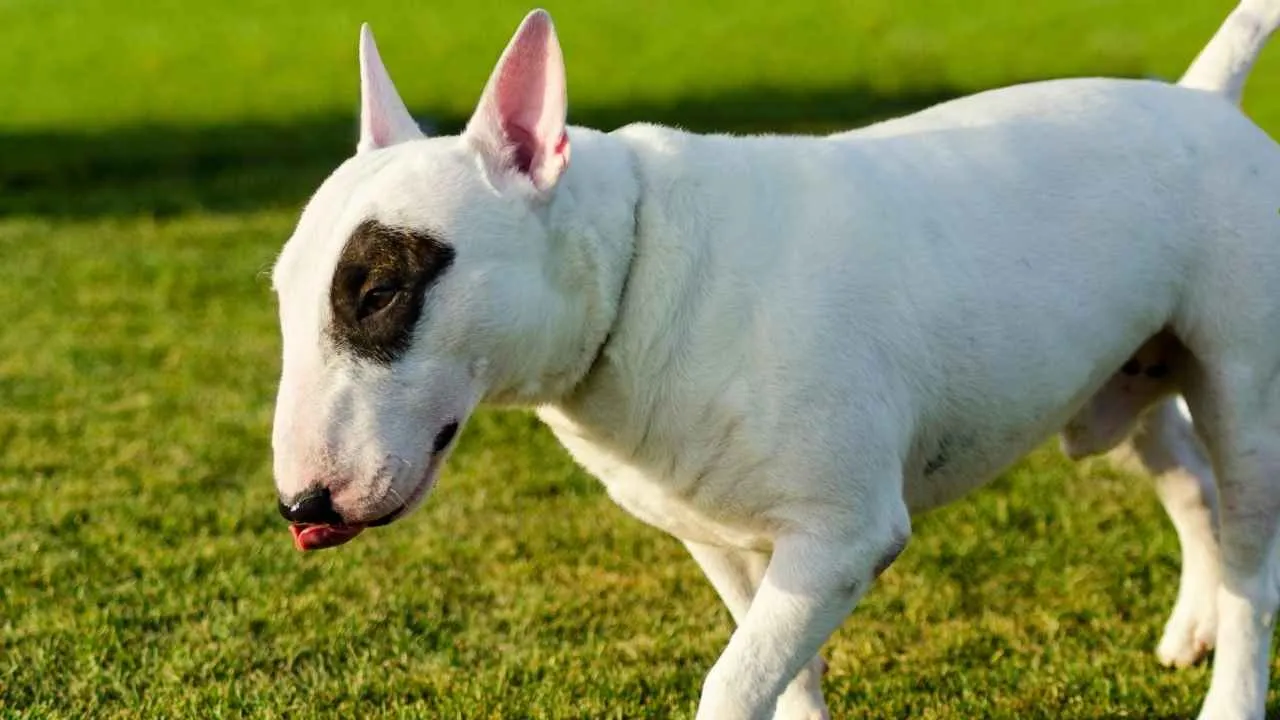
The Bull Terrier’s egg-shaped head creates its distinctive look, but also conceals the powerful muscles behind its determined, medium-sized stature. The Bull Terrier stands 10 to 14 inches tall, making it a medium-sized dog, yet its muscular build distinguishes it as extraordinary.
This dog breed boasts shoulders, thick fur, and a barrel-like chest, creating explosive energy and agility that places it among today’s most powerful dog breeds. The Bull Terrier appears strong but demonstrates great friendliness and overwhelming affection toward family members, making it an unexpectedly wonderful choice for adoption as a family pet.
Conclusion
The power and charm of muscular dogs bring them praise because they exhibit both strength and traits such as adaptability, intelligence, and loyalty. The combination of power and purpose makes them a perfect family dog. This group displays a broad spectrum of traits, including fluffy coats and short legs as well as broad heads and wavy coats, which showcase their diverse temperaments and appearances.
These breeds possess high intelligence and a tendency toward stubbornness, but they respond well to proper socialization and training, combined with stable routines. Many dogs struggle with separation anxiety, but others exhibit intense sociability with other pets when nurtured in a supportive and structured environment.


